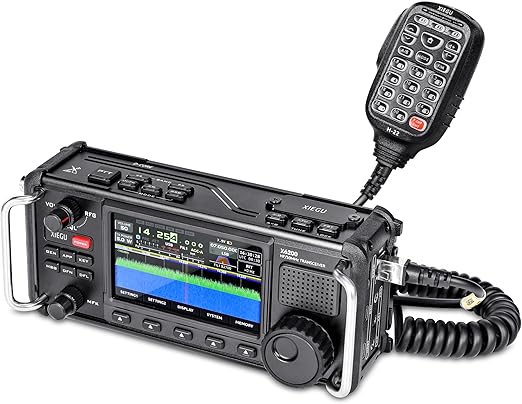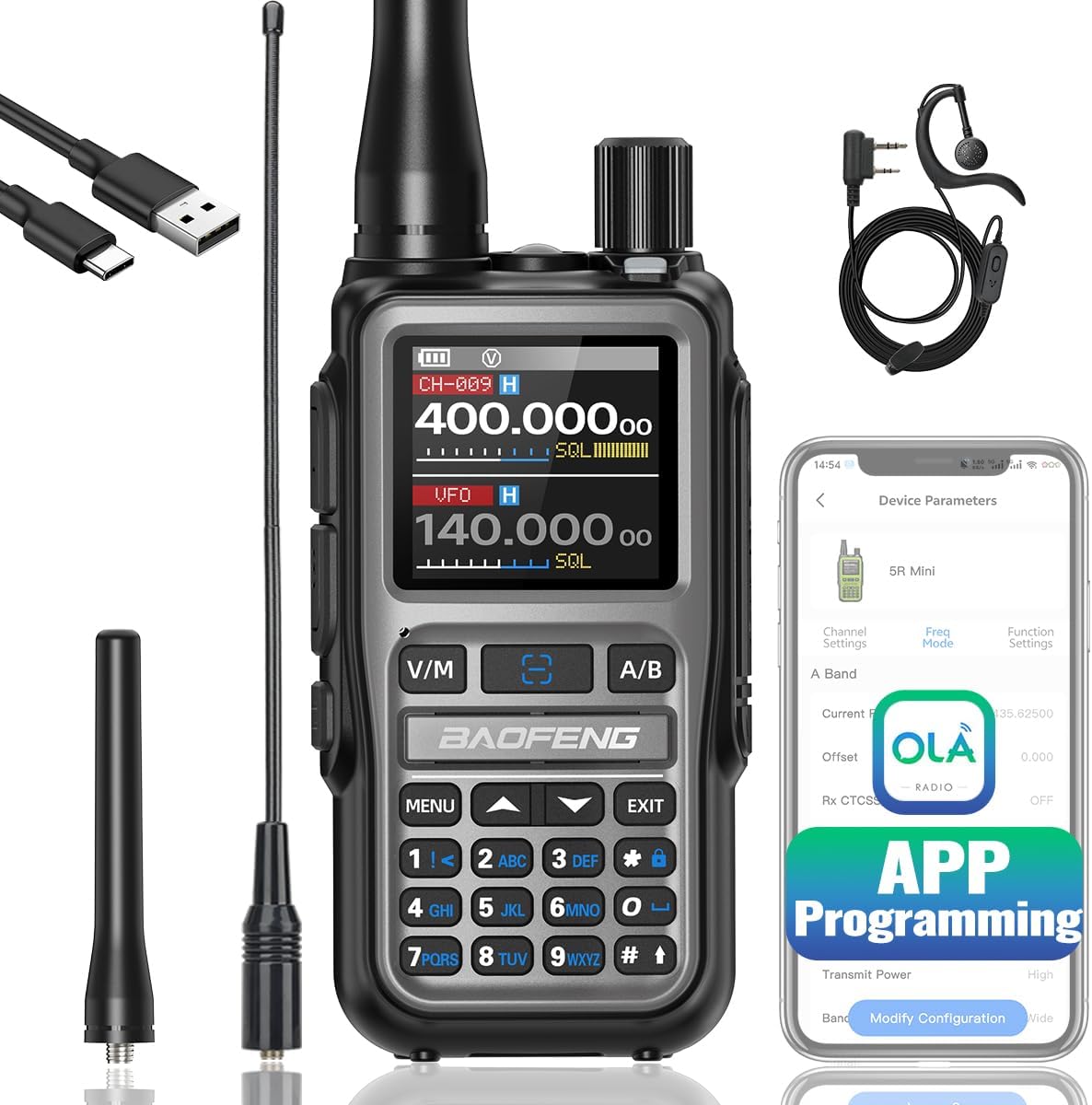
Introduction
The Xiegu X6200 is a compact, feature-rich HF/50MHz SDR transceiver aimed at operators who want a portable rig that doesn't skimp on capability. It brings a 4.0" high-resolution color display, all-mode HF and 6-meter coverage, an internal automatic antenna tuner, an integrated soundcard for digital modes, and the flexibility of battery or external power operation. For portable operators, field days, and home-station backup use, it promises a rare mix of convenience and capability in a relatively small package.
Build, Fit, and Finish
The chassis feels solidly built with a metal frame and a finish that suggests Xiegu improved quality compared with their earlier portables. The front panel is dominated by the 4" color display and a large multi-function tuning knob. Buttons are logically grouped, though the menu system can feel a bit deep at first. The battery is removable and fits securely, which is an advantage for field operators who want to carry spares. The radio feels more substantial than the smallest QRP portables and gives the impression of quality construction.
Display and User Interface
The 800×480 4" screen is sharp and makes the spectrum, waterfall, and menus easy to read. The waterfall display is responsive and useful for quick band scanning and spotting signals in crowded conditions. The menu system takes some time to learn, but once mastered, it allows fast operation and access to a wide range of settings. The integrated visual tuning tools are among the receiver’s best features and help the operator stay aware of band activity.
Receiver Performance
The X6200 uses a modern SDR-style design and delivers a capable receiver for its class. Across SSB, CW, and digital modes, it offers good sensitivity and dynamic range for a compact portable. The wide-FM broadcast and aviation band reception expand its usefulness beyond the amateur bands for general listening. The receiver handles typical conditions well, although in high-RF environments it may show the limits expected of smaller portables.
Transmitter and Power
The X6200 provides around 8 watts of output when powered from an external 12V supply and roughly 5 watts from the internal battery. For portable use, that’s sufficient for local and moderate-distance contacts, and the rig can be paired with a small amplifier for higher power. Transmit audio is clean and natural, and the radio supports all common modes, including AM, FM, SSB, and data. External power is recommended for extended or high-power operation.
Built-in Automatic Antenna Tuner and RF Front-End
One of the X6200’s strongest features is the built-in automatic antenna tuner. It covers a wide portion of HF plus 6 meters and is a huge advantage when operating with random wires or portable antennas. The integrated SWR scanner makes antenna matching easy and helps ensure efficient transmission. This tuner makes the radio far more forgiving in portable setups where perfect antenna resonance isn’t possible.
Digital Modes, Connectivity, and Soundcard
The X6200 comes equipped with an integrated USB soundcard and full support for digital modes. It can connect directly to computers for FT8, PSK31, and other modes without requiring external audio interfaces. The radio also supports wireless FT8 operation and has CAT control for remote use. Built-in digital mode support and a modem simplify operation and make this rig ideal for portable digital enthusiasts.
Battery Life and Portability
The removable battery pack provides several hours of operation depending on mode and transmit time. Light use in receive mode can stretch runtime to around 4–5 hours, while heavy transmit use will shorten it. The battery is easy to swap, allowing operators to bring spares for extended trips. The radio’s size is slightly larger than tiny QRP rigs, but it strikes a comfortable balance between portability and functionality.
Audio, Filters, and CW/SSB Operation
Transmit audio is crisp, and the receiver includes adjustable filters that help isolate signals in crowded bands. CW operators will appreciate the built-in keyer and memory features, while SSB users will find the audio quality suitable for both casual and serious operation. The radio’s flexibility across modes makes it suitable for varied operating styles and conditions.
What It’s Best At
The X6200 shines in portable and field operations such as POTA or SOTA, where its built-in tuner, soundcard, and battery operation make it highly convenient. Its display and waterfall view make identifying open frequencies and signals easy, and the digital features remove the need for multiple external accessories. It’s also an excellent backup or secondary station at home.
Limitations and Tradeoffs
Transmit power is limited compared to base stations, making it less ideal for pileups or extreme DX conditions. As with most small portables, strong-signal environments can cause some overload. The learning curve for the menus is real but manageable with regular use. Operators seeking a high-power or contest-grade transceiver may prefer a full base station setup.
Comparison with Similar Portables
Compared to smaller QRP radios, the X6200 offers a larger screen, built-in tuner, and integrated soundcard—at the cost of a bit more size and weight. Compared to larger base rigs, it sacrifices power and some advanced controls but compensates with convenience and portability. For its category, it competes well and often exceeds expectations.
Who Should Buy It
The Xiegu X6200 is perfect for operators who want a self-contained HF/6m radio for portable or home use. It’s especially appealing to those who operate outdoors, travel, or want an all-in-one solution for digital modes without extra gear. It’s also a good option for beginners stepping into HF operation with modern features.
Final Verdict
The Xiegu X6200 is a well-designed portable SDR transceiver that offers a strong mix of modern features, solid build quality, and versatility. The bright color display, built-in tuner, soundcard, and digital capabilities make it one of the most capable compact HF rigs available. While it can’t replace a high-end base station for serious DX work, it excels in its intended role as a portable and convenient all-in-one transceiver. For operators who prioritize portability, simplicity, and flexibility, the Xiegu X6200 is an excellent choice.
Pros
-
Excellent feature set for its size
-
Built-in automatic antenna tuner
-
Integrated soundcard and digital mode support
-
Removable battery for portable operation
Cons
-
Modest transmit power
-
Slight susceptibility to overload in high-RF areas
Overall, the Xiegu X6200 delivers modern technology and convenience in a compact and rugged package, making it a great companion for both new and experienced operators who love portable HF radio.

